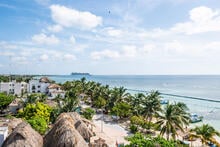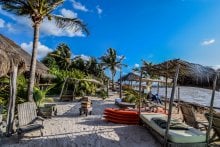Ancient Mayan ruins have been something that has always fascinated me, and I finally had the opportunity to see them myself.

While preparing for a cruise on Radiance of the Seas, I knew that I wanted to see Mayan ruins during the ship’s stops at Costa Maya and Cozumel, Mexico.
Kohunlich is one of many ancient Mayan ruins near Costa Maya, in the Yucatán peninsula of Mexico.
These ruins, in particular, date back to the late classic period of Mayan civilization, roughly between the 7th and 10 centuries CE.
Seeing them while traveling on a cruise ship seemed so much easier than a land trip, because a land trip would have required much more extensive planning, from purchasing international flights to finding quality lodging to renting transportation to the Mayan ruin sites.
However, on my cruise, it was an easy one-day stop at Costa Maya that took me straight to see these once-in-a-lifetime ancient ruins.

Kohunlich is known for its impressive architecture, including pyramids, temples, plazas, and many well-preserved buildings.
In particular, the most famous building is the Temple of Masks, which features a row of large masks on the front face of the temple.

Today, Kohunlich is a popular tourist attraction, and it was one of the cheapest Mayan ruin shore excursions that was offered on this cruise. It was $101.99, including transportation, snacks, water, and lunch.
Read more: 8 cruise ship shore excursions our readers tried and instantly regretted
My friend, who joined me on the cruise, purchased the excursion with me, and we both beamed with excitement to see these ancient structures.

When our ship arrived in Costa Maya, the excursion started bright and early in the morning. Although the shore excursion was listed as beginning at 8:30 A.M., we had to meet our group at 8:00 A.M.
After showing our tickets, we received stickers with specific numbers so that we could all gather together as a group. They called our numbers one by one when they were ready for us to disembark.
The crew members guided us to the gangway on deck 2, and we could disembark the ship.

After we exited the cruise port, we walked down the pier and were immediately guided into lines for our particular tour.
In front of these lines, three men danced and played drums in traditional Mayan costumes. Cruisers could also go up and take pictures with them!
This was a different shore excursion experience for me, as there were many people all lined up in sections. Although Radiance of the Seas was the only ship in the port, there seemed to be a large crowd of people around us.
However, the port was well-organized, and our tour guide found us by the sticker numbers we placed on our shirts. She called us forward when it was time to enter the bus.
There, we met our guides and bus driver, and they gave us some snacks and water.

Then we hopped onto the bus and settled in for the 2-hour drive.
While we drove, our tour guide, Kitzia, got on the microphone, introduced herself, and told us stories about the area.
Kitzia herself was half Mayan and even taught us some words in Maya, a dead language, but still learned conversationally.
The drive was about two and a half hours with traffic, but the scenery was fascinating as we passed a few towns.
The main town near the port of Costa Maya is Mahahual, which is right next door, but a striking contrast from the touristy port town we initially saw.
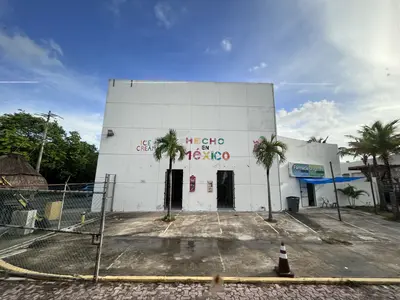
After passing through the town of Mahahual, it was evident that the Port of Costa Maya is a tourist attraction rather than an authentic Mexican town.
As the bus ride progressed, we drove further into the jungle and even passed a nature-preserved swamp, much like Florida’s Everglades.
There was a bathroom located on the bus, but it did not have any running water, so I found myself wishing I had remembered to bring hand sanitizer.
When we finally arrived at the archaeological site, the bus went down a small, one-lane road to get into the area.

When we arrived, our tour guide let us know that the area was being remodeled and the entrance to the site was filled with construction equipment.
They were clearing out more of the jungle to make way for a bigger site, part of a large government project where they are adding a train to visit many Mayan ruins.
This development will do a lot for Mexico‘s tourism and make it easier to get between Mayan archaeological sites.
However, when we were visiting, it meant that there were only portapotties and mostly mud at the entrance to the rooms.
Read more: Ultimate Mexico Cruise Guide

We walked in and started taking pictures. We had to be sure to not take any videos because the park charges an extra fee for any videos or “professional filming”. Our tour guide simply said that video would be prohibited and the group could be kicked out if caught filming.
As we stood in the middle of the pastures, our guide stopped and told us a little more about the buildings that we were seeing: dormitories, a palace, and later on, we approached the temple and ballgame court.

We were able to walk right up onto the buildings and explore the ruins ourselves.
I was amazed knowing that we were walking on thousand-year-old structures that had been built by people in this very location.

One of the larger structures was a former palace, where we could walk up the stairs and stand on the second level. Of course, we had to be careful as the edges were crumbling, but it was still very solid. Most of the buildings were made of limestone and had large wide steps.
Kitzia let us know that the steps were larger because you have to keep looking down when you’re walking on them, making the people bow down to the gods as they entered.

After exploring those buildings, we walked a little further up the pasture and into the jungle. There we saw the main building and attraction of Kohunlich: the Temple of Masks.
Although there are multiple theories about what this building was for, most resources state that this is a temple to the sun God.
Since the Mayans had a very accurate astrological calendar, this temple helped to mark the seasons with the movement of the sun at its corners.

It also features several masks on the side of the building, faces carved into the structure. These masks are huge and remarkably well preserved, and we could see them clearly even from the first level.
Beyond the archeological wonders, I always saw many natural wonders at this ruins site, such succulent vines.
And, although I didn't see them, I heard howler monkeys shrieking!
I appreciated that the hike around the site wasn't too strenuous: people of all ages could join.
I overheard an elderly couple saying that they were grateful they were able to join in on this incredible experience. Although we could walk up onto the buildings, there was no requirement to, and we could also stay on the flat pasture to simply look up at the structures.
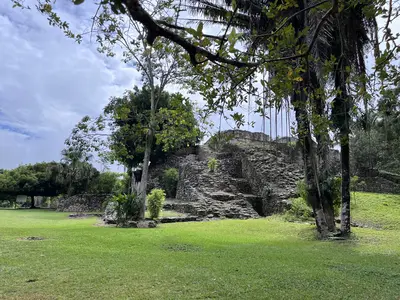
It did get hot, especially in the middle of the day, but our guides were consistent in passing out water and finding places to stand in the shade. People could also walk right back to the bus at any time if they needed to.
After our hike around the site, everyone piled back into the bus, and we rode back to the cruise port.
We got back around 3:30 P.M., making the entire trip about 7 hours in total. While it was a long day, I think it required less extensive travel planning than if I had planned to do this on my own as part of a land trip.
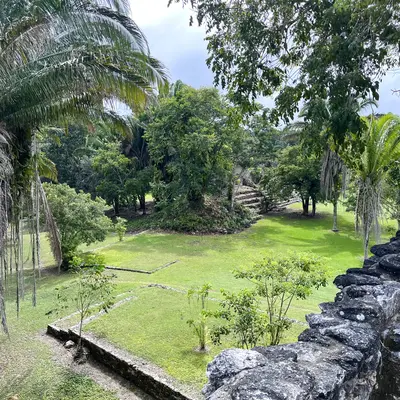
Overall, it was a remarkable experience and a once-in-a-lifetime opportunity to see thousand-year-old structures.
And, best of all, we could walk right back onto the cruise ship when it was over, ready to experience adventure at our next destination.


